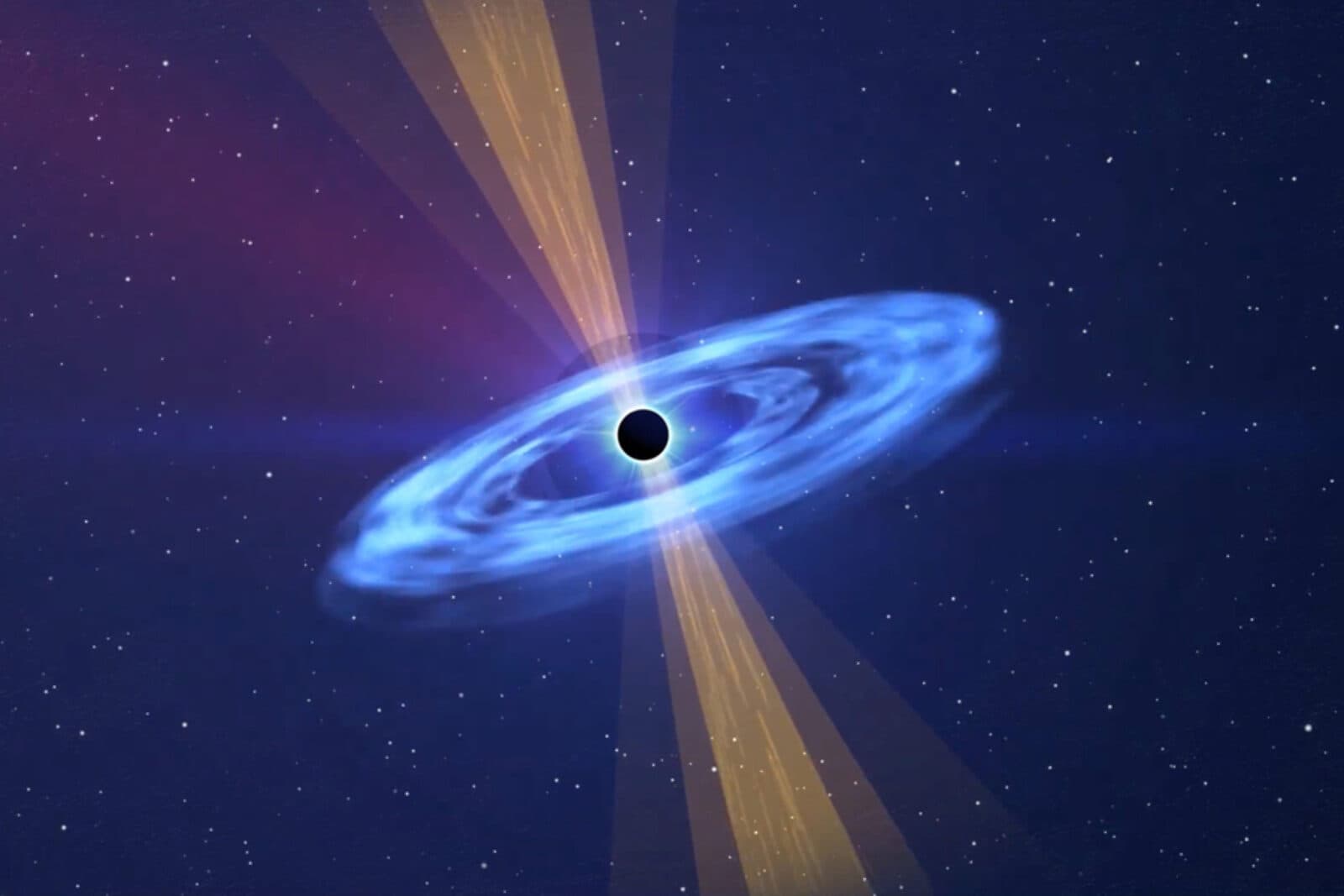A New Year of New Discoveries
by Adam Hadhazy
Research highlights from Kavli Astrophysics Institutes

The Author
"Space, the final frontier," as famously intoned during Star Trek's opening credits narration, really is an apt description of the enveloping cosmos. While we humans may physically travel to all ends of our world—though admittedly most of the deep ocean remains just as unknown to us as the endless deep overhead—we will, with nearly all certainty, never travel to the ends of the universe. Instead, we must content ourselves by peering ever deeper with new and more powerful instruments. As we celebrate another new year here on Earth, it's worth taking a moment to reflect on how we have continued forging farther into the final frontier, apprehending more and more of its remote reaches. Many Kavli astrophysics institute-affiliated researchers are in this role of determined explorer, pushing ahead and seeing what is over the proverbial horizon. The James Webb Space Telescope, which launched in December 2021, is just one of the new generation of instruments that is taking us further into space and time, bringing never-before-seen galactic entities into our expanding sphere of knowledge. "To boldly go where no one has gone before," as the opening credits narration crescendos—indeed, that is what astrophysicists will keep doing in 2023 and beyond.
The most distant galaxies ever seen, thanks to groundbreaking new telescope
Researchers have happily announced that the long-awaited James Webb Space Telescope (JWST) is achieving a key mission goal by revealing the most distant, earliest galaxies ever seen. The galaxies' light is reaching us from 13.4 billion years in the past, a time when the universe was only 2% of its current age. Although spotted earlier in JWST's observing campaign, it was only recently that the young galaxies in question had spectroscopy performed on them, necessary for confirming their distance. Seeing galaxies at such early developmental stages will be invaluable for building out theories of galaxy formation and evolution. Scientists at the Kavli Institute for Cosmology, Cambridge (KICC) are part of the international team that has reported JWST's success.
Long-lasting gamma-ray blasts linked to smashups of black holes and neutron stars
It's an astrophysical extravaganza when the densest kinds of objects in the universe, black holes and neutron stars, collide. There has been debate about what sorts of gamma-ray bursts (massively energetic blasts of gamma rays) the various collision combinations between these dense objects can produce. Researchers at the Kavli Institute for Astronomy and Astrophysics (KIAA) at Peking University and colleagues have now reported in a recent study that an unusual class of long-lasting gamma-ray bursts (GRBs) can be generated when black holes and neutron stars smash together. These bursts, which last more than two seconds, have been previously tied to the core collapses of hefty stars—events which also yield extremely bright supernova explosions. The study has shown, though, that less intense explosions, dubbed kilonovae, can be associated with these longer-winded GRBs. Overall, sorting out which phenomena produce certain measurables will allow for deeper tests of many astrophysical and basic physics theories.
Hunting for dark matter at the core of the Solar System
An innovative experiment involving a spacecraft operating in the space between Mercury and the sun could be a powerful new way to search for dark matter. The experiment is proposed by a trio of researchers including two researchers from the Kavli Institute for Cosmological Physics (KICP) at the University of Chicago and the Kavli Institute for the Physics and Mathematics of the Universe (Kavli IPMU) at the University of Tokyo. Dark matter is a hypothetical substance that according to many lines of evidence should comprise about 80% of the matter in the cosmos. However, all detection attempts to date have failed. A new environment to search for dark matter would be in the region between the sun and Mercury, where dark matter—which is apparently sensitive to gravity—should pool in the solar system. The researchers propose sending an extremely sensitive atomic clock aboard a spacecraft to ply this space. In theory, based on the dark matter's properties, the substance should interact with the components of the clock enough to disrupt its delicate timing operations. If no such detection occurs, new limits on what dark matter can ultimately be will at least have been learned.
Stupendous flash likely from Earth staring down the barrel of a black hole jet
An explanation has emerged for a fantastically bright cosmic flash on the order of a quadrillion suns that was captured by a telescope in 2022. Researchers at the Massachusetts Institute of Technology's Kavli Institute for Astrophysics and Space Research (MKI) have conjectured that the flash—known as AT 2022cmc—is a high-powered jet from a black hole that happened to be pointed right at Earth. The particular kind of jet involved forms when a black hole encounters and gravitationally shreds a star—what astronomers clinically call a "tidal disruption event," or TDE. AT 2022cmc is the brightest TDE on record. Studying TDEs further will offer insights into the growth of black holes and test out some complex, high-energy physics.
Lack of hydrogen signature potentially places limits on early galaxies
Scientifically, not seeing something is just as useful as seeing something. In this vein, KICC researchers and colleagues have reported a non-detection of a particular radio wave signature of hydrogen gas, called the 21-cm line, from the distant universe. The non-detection speaks to the properties of some of the earliest populations of stars and galaxies, circa 200 million years post-Big Bang. For instance, the lack of signature suggests early galaxies were poor heaters of hydrogen gas which, when energized, gives off the distinctive 21-cm line. These galaxies also must not have been more than a thousand times brighter than modern galaxies in the radio band. Of note, though, different instruments have gathered conflicting findings about the ancient 21-cm line, overall indicating that far more research will need to be done on this far-flung epoch of cosmic history.